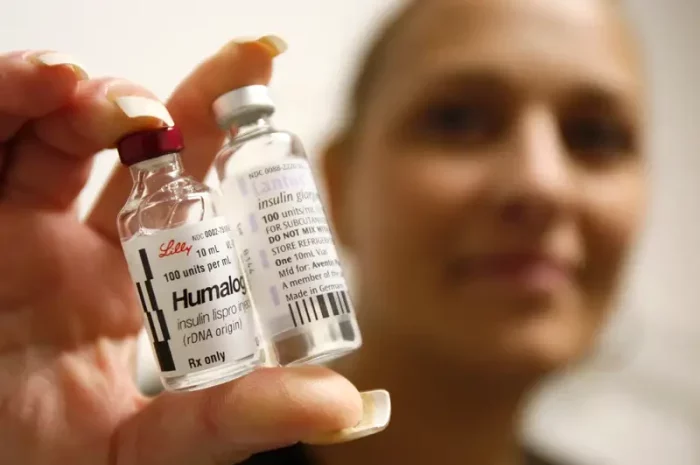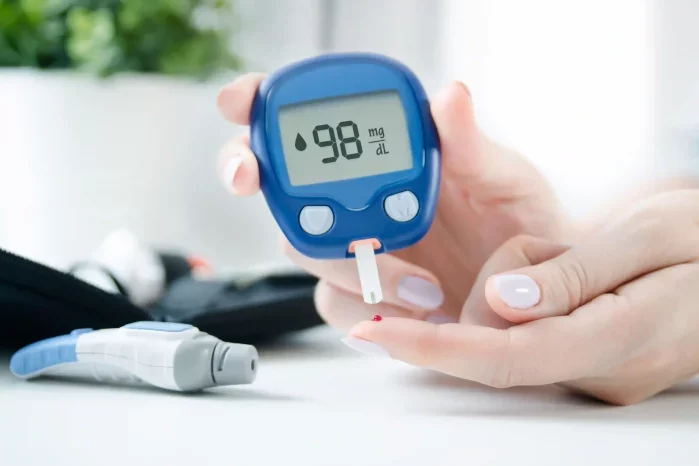Diabetes mellitus, commonly referred to as diabetes, is a chronic metabolic disorder characterized by elevated levels of glucose in the blood. It arises due to the body’s inability to produce enough insulin, use insulin effectively, or both. Insulin is a hormone produced by the pancreas that regulates blood sugar levels. When this regulation is disrupted, glucose builds up in the bloodstream, leading to various health complications.
Diabetes is classified into four primary types: Type 1, Type 2, Gestational Diabetes Mellitus (GDM), and other specific types. Each type has distinct pathophysiological mechanisms, clinical presentations, and management strategies. Understanding these differences is crucial for effective diagnosis, treatment, and prevention of diabetes-related complications.
Type 1 Diabetes
Type 1 diabetes, previously known as juvenile diabetes or insulin-dependent diabetes, is an autoimmune condition wherein the body’s immune system mistakenly attacks and destroys the insulin-producing beta cells in the pancreas. This destruction leads to little or no insulin production, necessitating lifelong insulin therapy.
Etiology and Pathophysiology
The exact cause of Type 1 diabetes remains unknown, but it is believed to result from a combination of genetic predisposition and environmental triggers. Genetic factors include specific human leukocyte antigen (HLA) genotypes that increase susceptibility to autoimmune reactions. Environmental triggers might include viral infections, dietary factors, and toxins, although the precise mechanisms remain unclear.
In Type 1 diabetes, the immune system’s attack on pancreatic beta cells is mediated by autoantibodies. The presence of autoantibodies against insulin (IAA), glutamic acid decarboxylase (GAD), and other islet cell antigens can be detected before the clinical onset of diabetes, indicating ongoing beta-cell destruction.
Clinical Presentation
Type 1 diabetes often presents acutely, with symptoms developing over days to weeks. Common symptoms include:
- Polyuria (frequent urination)
- Polydipsia (increased thirst)
- Polyphagia (increased hunger)
- Unintentional weight loss
- Fatigue
- Blurred vision
- Ketoacidosis (in severe cases), characterized by nausea, vomiting, abdominal pain, and altered consciousness
Diagnosis
The diagnosis of Type 1 diabetes is based on clinical presentation and laboratory tests. Key diagnostic criteria include:
- Fasting plasma glucose level ≥ 126 mg/dL (7.0 mmol/L)
- Random plasma glucose level ≥ 200 mg/dL (11.1 mmol/L) with symptoms of hyperglycemia
- Hemoglobin A1c (HbA1c) ≥ 6.5%
- Positive autoantibodies (e.g., GAD, IAA)
Management
The cornerstone of Type 1 diabetes management is insulin therapy. Multiple daily injections (MDI) of insulin or continuous subcutaneous insulin infusion (CSII) via an insulin pump are common approaches. The goal is to mimic physiological insulin secretion and maintain blood glucose levels within target ranges.
In addition to insulin therapy, Type 1 diabetes management includes:
- Regular blood glucose monitoring
- Carbohydrate counting and dietary planning
- Physical activity
- Education on hypoglycemia recognition and management
- Regular follow-ups with healthcare providers to monitor for complications
Type 2 Diabetes
Type 2 diabetes, previously known as adult-onset diabetes or non-insulin-dependent diabetes, is the most common form of diabetes, accounting for approximately 90-95% of all cases. It is characterized by insulin resistance and relative insulin deficiency.
Etiology and Pathophysiology
Type 2 diabetes results from a combination of genetic, environmental, and lifestyle factors. Key risk factors include:
- Family history of diabetes
- Obesity, particularly central adiposity
- Sedentary lifestyle
- Unhealthy diet
- Aging
- Ethnicity (higher prevalence in certain populations, such as African American, Hispanic, Native American, and Asian communities)
In Type 2 diabetes, insulin resistance occurs when cells in muscles, fat, and the liver do not respond well to insulin and cannot easily take up glucose from the blood. Initially, the pancreas compensates by producing more insulin, but over time, beta-cell function declines, leading to hyperglycemia.
Clinical Presentation
Type 2 diabetes often develops insidiously, with symptoms appearing gradually and sometimes going unnoticed for years. Common symptoms include:
- Polyuria
- Polydipsia
- Fatigue
- Blurred vision
- Slow healing of wounds
- Frequent infections
- Acanthosis nigricans (dark, velvety skin changes, usually in body folds)
Diagnosis
The diagnosis of Type 2 diabetes is similar to that of Type 1 diabetes, with key criteria including:
- Fasting plasma glucose level ≥ 126 mg/dL (7.0 mmol/L)
- Random plasma glucose level ≥ 200 mg/dL (11.1 mmol/L) with symptoms of hyperglycemia
- HbA1c ≥ 6.5%
- 2-hour plasma glucose ≥ 200 mg/dL (11.1 mmol/L) during an oral glucose tolerance test (OGTT)
Management
The management of Type 2 diabetes focuses on lifestyle modifications and pharmacotherapy to achieve and maintain glycemic control and reduce the risk of complications. Key components include:
Dietary changes: Emphasis on a balanced diet rich in whole grains, fruits, vegetables, lean proteins, and healthy fats; reducing intake of refined sugars and processed foods.
Physical activity: Regular exercise, such as brisk walking, swimming, or cycling, to improve insulin sensitivity and promote weight loss.
Weight management: Achieving and maintaining a healthy weight through diet and exercise.
Pharmacotherapy: Oral hypoglycemic agents (e.g., metformin, sulfonylureas, DPP-4 inhibitors, SGLT2 inhibitors) and/or insulin therapy as needed to achieve target bloodglucose levels.
Monitoring: Regular blood glucose monitoring and HbA1c testing to assess glycemic control.
Education: Ongoing patient education on diabetes self-management, including medication adherence, lifestyle changes, and recognizing and managing hypoglycemia and hyperglycemia.
Gestational Diabetes Mellitus (GDM)
Gestational diabetes mellitus (GDM) is a type of diabetes that develops during pregnancy and typically resolves after childbirth. It is characterized by glucose intolerance that is first recognized during pregnancy.
Etiology and Pathophysiology
The exact cause of GDM is not fully understood, but it is believed to result from a combination of genetic and environmental factors, along with the metabolic changes that occur during pregnancy. Pregnancy hormones, such as human placental lactogen (hPL), progesterone, and cortisol, contribute to insulin resistance. When the pancreas cannot produce sufficient insulin to overcome this resistance, GDM develops.
Risk factors for GDM include:
- Obesity
- Advanced maternal age
- Family history of diabetes
- Previous history of GDM
- Polycystic ovary syndrome (PCOS)
- Ethnicity (higher prevalence in certain populations, such as Hispanic, African American, Native American, and Asian)
Clinical Presentation
GDM is often asymptomatic and is usually detected through routine screening during pregnancy. However, some women may experience:
- Increased thirst
- Frequent urination
- Fatigue
Diagnosis
Screening for GDM typically occurs between 24 and 28 weeks of gestation using an oral glucose tolerance test (OGTT). Diagnostic criteria for GDM vary, but common guidelines include:
- Fasting plasma glucose ≥ 92 mg/dL (5.1 mmol/L)
- 1-hour plasma glucose ≥ 180 mg/dL (10.0 mmol/L) following a 75-g oral glucose load
- 2-hour plasma glucose ≥ 153 mg/dL (8.5 mmol/L) following a 75-g oral glucose load
Management
The management of GDM focuses on maintaining optimal blood glucose levels to minimize risks to both the mother and the baby. Key components include:
Dietary modifications: Emphasis on a balanced diet with controlled carbohydrate intake to manage blood glucose levels.
Physical activity: Regular, moderate exercise to improve insulin sensitivity.
Blood glucose monitoring: Frequent self-monitoring of blood glucose levels to guide treatment decisions.
Pharmacotherapy: If lifestyle modifications are insufficient, insulin therapy or oral hypoglycemic agents (e.g., metformin) may be used to achieve glycemic control.
Fetal monitoring: Regular monitoring of fetal growth and well-being to detect any potential complications.
Postpartum follow-up is essential to monitor for the resolution of GDM and to assess the risk of developing Type 2 diabetes in the future.
Other Specific Types of Diabetes
In addition to the primary types of diabetes, there are other specific types that arise from various causes, including genetic defects, endocrine disorders, medications, and other diseases. These types of diabetes are less common but important to recognize and manage appropriately.
Monogenic Diabetes
Monogenic diabetes results from mutations in a single gene that affects insulin production or function. It includes two main subtypes:
Maturity-Onset Diabetes of the Young (MODY): A heterogeneous group of inherited diabetes that typically presents in adolescence or early adulthood. MODY is characterized by autosomal dominant inheritance and varying degrees of insulin deficiency.
Neonatal Diabetes Mellitus (NDM): A rare form of diabetes that occurs in the first six months of life. NDM can be transient or permanent and is caused by mutations affecting pancreatic beta-cell development or function.
Secondary Diabetes
Secondary diabetes occurs as a result of other medical conditions or treatments that affect glucose metabolism. Common causes include:
Endocrine disorders: Conditions such as Cushing’s syndrome, acromegaly, and hyperthyroidism can lead to secondary diabetes due to hormonal imbalances that affect insulin action.
Pancreatic diseases: Chronic pancreatitis, cystic fibrosis, and pancreatic cancer can impair insulin production, leading to diabetes.
Medications: Certain medications, such as glucocorticoids, thiazide diuretics, and atypical antipsychotics, can induce hyperglycemia and increase the risk of diabetes.
Infections: Viral infections, such as cytomegalovirus and congenital rubella, have been linked to the development of diabetes.
Management of Other Specific Types of Diabetes
The management of other specific types of diabetes involves addressing the underlying cause and using appropriate diabetes treatment strategies. For example:
- In monogenic diabetes, genetic testing can guide specific treatment decisions, such as using sulfonylureas instead of insulin in certain types of MODY.
- In secondary diabetes, managing the primary condition (e.g., treating Cushing’s syndrome) can improve glucose control.
- Adjusting or discontinuing medications that induce hyperglycemia can help manage secondary diabetes.
See also:Do You Know How To Lower Blood Sugar Immediately?
Conclusion
Diabetes is a complex and multifaceted disease with multiple subtypes, each requiring tailored approaches to diagnosis, treatment, and management. Understanding the differences between Type 1, Type 2, Gestational Diabetes Mellitus, and other specific types of diabetes is essential for healthcare providers to deliver effective care and improve patient outcomes.
Advances in research continue to shed light on the underlying mechanisms of diabetes and pave the way for innovative treatments and prevention strategies. By staying informed about the latest developments in diabetes care, healthcare providers can help patients achieve better glycemic control, reduce the risk of complications, and enhance their overall quality of life.
Related topics:
Exploring the Differences: Ketoacidosis VS Ketosis
What are the Symptoms of Late-onset Diabetes?
What are the 3 Most Common Symptoms of Undiagnosed Diabetes?

























